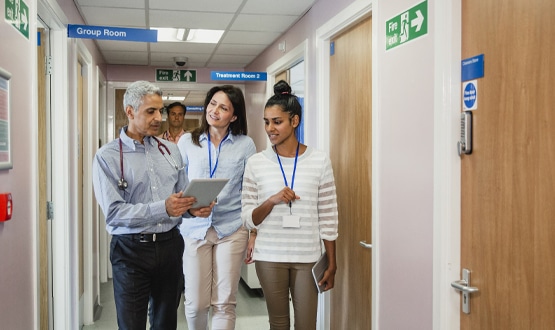Microsoft Launches NHS Integration Vision
- 20 February 2002
Microsoft has launched a blueprint which it says will enable the NHS to integrate health legacy IT systems cost-effectively and deliver joined-up healthcare.
The US software-giant describes its vision as EAI (Enterprise Application Integration), an approach grounded in Microsoft’s .NET suite of products to deliver joined-up, distributed web services.
The emerging .NET strategy is based on making information available to individuals on a range of devices — from PDAs to smart phones and PCs, enabling information to be accessed or updated by individuals with the right security credentials at any time or place
The EAI vision, meanwhile, focuses on the seamless integration of multiple applications and devices, a major problem in the public sector where most legacy IT systems were not designed with integration in mind.
Microsoft says the solution is to integrate multiple systems by packaging data from existing applications and forwarding it to a central hub, where it can be accessed by other applications.
Jenny Duff, public sector industry manager for Microsoft UK, stressed the pressure was on for UK public sector organisations to deliver joined-up services and make them available online by 2005.
"EAI enables the public sector to do this, by simply enabling existing applications to integrate with each other, using standard Internet-based technology," said Duff.
The challenge in health, she added, was to tie together different processes. "Not just within an organisation but between different healthcare organisations". But she acknowledged there were a lot of cultural and change management issues that must first be addressed.
The EAI approach promises to enable organisations to protect their existing IT investments. Crucially, EAI is said to avoid the need to ‘rip and replace’ existing systems or build multiple, complex point-to-point interfaces.
Central to EAI, the .NET strategy and e-GIF (the e-government interoperability framework) is the open Internet standard of XML, which holds the promise of a universal data exchange format enabling multiple applications to easily access and exchange data.
One of the first NHS sites to adopt the EAI approach and underpinning .NET technology is South Staffordshire NHS Trust, where Microsoft has worked alongside health IT partner CSW Health Staffordshire to develop an community-wide electric record using Biztalk Server to integrate disparate systems into an integrated electronic health record.
Microsoft is also championing EAI through Lightbulb, a group of eight leading healthcare IT vendors working together to promote an eGIF-compliant web services architecture to enable interoperability and data sharing across the NHS.




